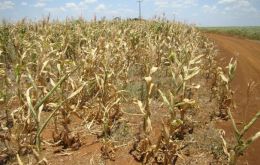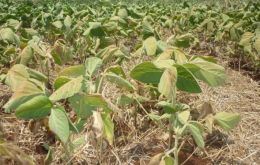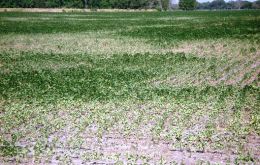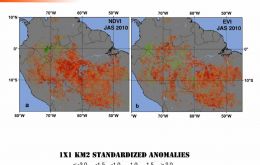MercoPress. South Atlantic News Agency
Tag: drought
-
Tuesday, March 6th 2012 - 05:33 UTC
Argentina’s top climatologist forecasts 20/21 million tons or corn this season

After back-to-back droughts, Argentine growers could have a record harvest of soybeans and corn next season as the La Niña weather phenomenon makes way for El Niño, one of the country's best-known forecasters anticipated.
-
Monday, March 5th 2012 - 23:42 UTC
Brazil 2011/12 soy and corn crops estimates slightly lower to 69.5m and 60.4m tons

Brazil’s 2011/12 soybean and corn crops are forecasted to be slightly lower than the original February estimates according to the latest release from industry and market analyst.
-
Wednesday, February 15th 2012 - 00:33 UTC
Brazil and Paraguay soybean harvest forecast downgraded because of lack of rain

Oil World cut its forecast for Brazil and Paraguay soybean production, extending the run of downgrades amid ideas that rains in the last two weeks has been insufficient to put a hold on crop losses.
-
Friday, February 10th 2012 - 04:15 UTC
Brazil anticipates a 3% contraction in the 2011/12 crop because of severe drought

The 2012 Brazilian grains and oilseed is expected to be below the 2011 record because of the intense drought in the months of December and January, particularly to the south of the country where soybeans and rice suffered most reported the Geography and Statistics Institute, IBGE.
-
Saturday, January 28th 2012 - 07:13 UTC
Drought in Argentina and Brazil cuts significantly corn crops’ volumes

Corn advanced heading for the biggest weekly gain in five as concerns that a renewed heat wave in Argentina and south Brazil may damage crops boosted demand for US grain. Soybeans were little changed.
-
Wednesday, January 18th 2012 - 05:12 UTC
Drought emergency in central Argentina and Paraguay but no sufficient rains on sight

Argentine corn and soy farms will suffer from hot weather and scant rains for the rest of this week, forecasters said on Tuesday, increasing worries that crop losses will eat into global supplies.
-
Monday, January 16th 2012 - 02:45 UTC
Argentine government and farmers clash over drought emergency support

As extreme drought conditions punish Argentina’s crops throughout the country farmers’ organizations are at loggerheads with the government of President Cristina Fernandez, which is refusing to increase the emergency fund for such situations and to alleviate the tax burden.
-
Wednesday, June 15th 2011 - 22:02 UTC
End of intense La Niña cycle anticipates return to average rainfall in Chile

The most intense La Niña climate pattern since 1975 is coming to a close in Chile, after it cooled water temperatures off the Pacific coast of South America and left a troubling drought in its wake.
-
Friday, April 1st 2011 - 01:42 UTC
Amazon drought consequences still affect an area 3.5 times the size of Texas

A new study has revealed widespread reductions in the greenness of Amazon forests caused by the last year's record-breaking drought.
-
Thursday, February 17th 2011 - 23:01 UTC
Good harvest year for Argentina farmers and the tax man, in spite of drought

A good crop year for Argentine farmers and the government: export revenue will be up 4 billion US dollars and the tax man will bag an additional 888 million US dollars according to estimates from local grain dealers.
